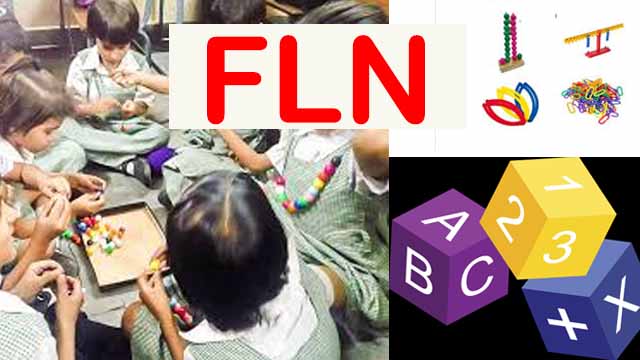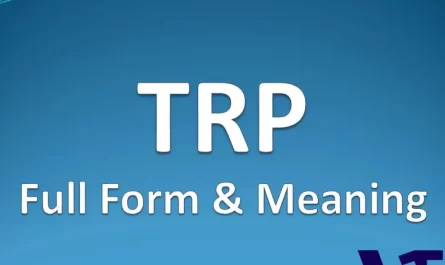FLN Full Form. In the fast-paced and technology-driven world, we live in today, acronyms have become an essential part of communication, simplifying complex concepts and terms. One such acronym that has garnered significant attention is “FLN.” However, many people might not be aware of its meaning or its impact on education and beyond.
In this article, we will delve into the intricacies of FLN full form, its purpose, and its relevance in our lives. By the end of this comprehensive exploration, readers will have a clear understanding of the Future Learning Network and its implications for the future of education and continuous learning.
FLN Full Form
FLN full form “Future Learning Network.” At its core, it represents a cutting-edge and dynamic approach to education, emphasizing adaptability, agility, and continuous improvement. The essence of FLN lies in its ability to harness innovative methodologies and technologies to enhance the learning experience and prepare individuals for an ever-changing world. The primary objective of FLN is to empower learners by providing them with a personalized, flexible, and relevant educational journey that caters to their unique needs and aspirations.

Origins of FLN
The concept of FLN can be traced back to the need for a transformative education system that goes beyond the limitations of traditional classroom-based learning. As industries and technologies rapidly evolve, the demand for individuals with versatile skills and knowledge has escalated. FLN emerged as a response to this demand, offering a forward-looking educational framework that fosters adaptability, critical thinking, and problem-solving abilities.
The Evolution of FLN
Since its inception, FLN has undergone significant evolution, driven by advancements in technology and pedagogical research. The convergence of artificial intelligence, machine learning, and data analytics has played a pivotal role in shaping the FLN landscape. These technological breakthroughs have revolutionized the way information is processed, delivered, and consumed, opening up new possibilities for education beyond traditional boundaries.
FLN in Modern Context
In the modern context, FLN has gained substantial traction, with educational institutions, corporations, and individuals recognizing its potential for transformative learning experiences. The hallmark of FLN lies in its flexibility, enabling learners to access educational resources anytime and anywhere, breaking free from the constraints of physical classrooms. This adaptability ensures that learning becomes a seamless and personalized journey, catering to the diverse needs and preferences of learners.
How Does FLN Work?
FLN operates on a network-based model, where knowledge and learning resources are distributed across various interconnected nodes. Learners access a vast repository of information, curated content, interactive learning modules, and multimedia resources through digital platforms and applications. These platforms leverage data analytics and algorithms to personalize learning paths, providing a tailored educational experience to each individual based on their progress, learning pace, and preferences.
Advantages of FLN
The adoption of FLN offers numerous advantages over traditional learning methods. Some of the key benefits include:
-
Flexibility: FLN allows learners to access educational content and resources at their convenience, fitting into their busy schedules and lifestyles. Whether it’s early morning or late at night, learners can engage with the material when they are most receptive to learning.
-
Personalization: One size does not fit all in FLN. Learners receive personalized learning pathways, enabling them to focus on areas they need to strengthen while bypassing content they have already mastered. This personalized approach enhances the efficiency of learning and boosts learners’ confidence.
-
Continuous Improvement: FLN nurtures a growth mindset, encouraging learners to embrace lifelong learning and continuous improvement. As knowledge and skills are updated regularly on digital platforms, learners can stay up-to-date with the latest developments in their fields.
-
Real-World Relevance: FLN places a strong emphasis on practical, industry-relevant knowledge and skills. Learners gain insights that are directly applicable to real-world scenarios, making them more employable and adaptable in the job market.
-
Cost-Effectiveness: FLN can often be more cost-effective than traditional education, particularly for self-learners. With the availability of free and affordable online courses, learners can access high-quality education without incurring substantial expenses.
Potential Applications of FLN
FLN’s versatility extends beyond academic settings, finding applications in various domains:
-
Corporate Training: In the corporate world, FLN facilitates upskilling and reskilling of employees to meet the demands of rapidly evolving industries. Companies can design customized learning programs for their workforce, ensuring a competent and agile workforce.
-
Skill Development: FLN serves as a bridge between formal education and industry requirements. Individuals can acquire new skills and competencies through FLN, catering to their specific career aspirations and personal interests.
-
Professional Development: FLN supports continuous learning for professionals across various fields. By staying informed about the latest trends and best practices, professionals can enhance their expertise and stay ahead in their careers.

FLN in Various Industries
The adoption of FLN is observed across diverse industries, such as healthcare, finance, technology, and manufacturing. In the medical sector, for instance, FLN plays a crucial role in disseminating medical breakthroughs, best practices, and specialized knowledge to healthcare professionals worldwide.
Limitations and Challenges of FLN
While FLN offers exciting prospects, it also faces several limitations and challenges:
-
Digital Divide: Unequal access to technology and the internet can hinder the widespread adoption of FLN. Ensuring equal access to educational opportunities remains a pressing concern.
-
Learning Style Compatibility: FLN might not suit all learners, as some individuals prefer traditional classroom-based instruction or require hands-on learning experiences.
-
Quality Control: With a vast amount of online content available, ensuring the accuracy, credibility, and reliability of educational resources can be a challenging task.
Future Prospects of FLN
As technology continues to advance, FLN is poised for significant growth and refinement. The integration of augmented reality, virtual reality, and artificial intelligence will further enhance the FLN experience, making education even more immersive, engaging, and effective.
Ethical Considerations
As FLN becomes an integral part of the educational landscape, several ethical considerations emerge:
-
Data Privacy and Security: FLN platforms collect and process vast amounts of data, necessitating robust measures to safeguard learners’ personal information.
-
Equal Access to Education: Efforts must be made to bridge the digital divide and ensure that FLN is accessible to learners from all socioeconomic backgrounds.
-
Quality Assurance: FLN platforms must maintain high standards of content quality and integrity, providing accurate and reliable information to learners.
Comparing FLN with Traditional Methods
To truly appreciate FLN’s potential, it is essential to compare it with traditional learning methods. While traditional education has served as a foundation for centuries, FLN’s learner-centric and adaptive approach sets it apart. By leveraging technology, FLN addresses the limitations of traditional methods and embraces the dynamic nature of knowledge and learning.
Expert Opinions on FLN
Experts in education, technology, and industry have voiced their opinions on FLN. Many experts express optimism about its potential to revolutionize learning and bridge educational gaps. However, some caution that a balanced approach that integrates both FLN and traditional methods may yield the most fruitful results.
Conclusion
In conclusion, FLN, the Future Learning Network, stands as a beacon of transformative education in an ever-evolving world. With its focus on adaptability, personalization, and continuous improvement, FLN empowers learners to embrace lifelong learning and succeed in a rapidly changing landscape. By leveraging the power of technology and connectivity, FLN unlocks a world of possibilities for individuals and organizations, fostering a society that thrives on knowledge, innovation, and progress.
Also Read: MPPSC Full Form: Exploring the Meaning and Significance
FAQs
FLN is designed to accommodate learners of all ages, from schoolchildren to working professionals.
FLN platforms often rely on peer review and expert curation to ensure the accuracy and reliability of educational materials.
While FLN offers numerous benefits, a hybrid approach that combines FLN with traditional methods may be more effective.
Yes, there are several free FLN platforms that offer a wide range of courses and learning resources.
Data analytics in FLN helps personalize learning experiences, track progress, and identify areas for improvement.



